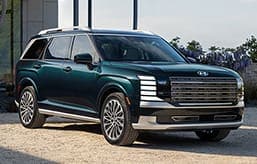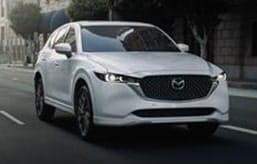- Drop-dead gorgeous styling
- Approachable performance limits
- More comfortable than a typical supercar
The 2022 Maserati MC20 may not quite be a supercar, but it is a SUPER car
We argue the MC20 is better than a supercar
I'm going to paraphrase Winston Zeddemore from the original Ghostbusters: "When someone asks you if you want to drive the Maserati MC20, you say YES."
That was exactly my response when Maserati offered a drive in the first sports car from the storied Italian carmaker since the MC12 in 2004 and 2005. The venue: Willow Springs International Raceway in Rosamond, California. After a generous number of laps with a pro driver sitting shotgun, I was also allowed to take a different MC20 out onto public roads. This is a sports car after all, not a race car.
What is the MC20?
The 2022 Maserati MC20 is a two-seat mid-engine sports car that is powered by a twin-turbocharged 3.0-liter V6 engine that produces 621 horsepower and 538 lb-ft of torque. That power is routed through an eight-speed dual-clutch automatic transmission on its way to the rear wheels, and only the rear wheels.
It's a weird world when those power output figures don't scream "supercar" anymore, especially when we see the latest batch of electric vehicles flirting with 1,000 horsepower. The MC20 makes up for that with a curb weight of less than 3,300 pounds. As a result, Maserati claims it will reach 60 mph in less than 2.9 seconds on its way to its 202-mph top speed.
Yet I still refuse to call it a supercar.
How is the MC20 on the racetrack?
Willow Springs is billed as the "Fastest Road in the West," though the years have not been kind to the racing surface. The pavement is beset by ripples that intensify with speed, and any off-track excursions are met with large rocks and berms that can ruin your decade.
Leaving the pits, the MC20 sings rather than roars, with the six cylinders producing a wonderfully mechanical alto voice. Power builds smoothly and with linear precision that encourages rather than intimidates. The gears are well spaced to keep power on tap without taxing the driver with a constant litany of upshifts and downshifts. It's easy to hustle the MC20 around all nine turns at Willow using only third, fourth and, briefly, fifth gear.
After a warm-up lap for familiarity, I floor the pedal onto the front straightaway as I see my passenger's grip increase on the grab handle. Just past a set of braking cones, I forcefully press into the brake pedal and my chest correspondingly presses into the seat belt. The MC20 feels well balanced for track duty as I then gently go with lighter pressure on the brakes while easing some steering input to the left for Willow's first turn.
Taking care to stay on the racing line, but also avoiding clipping the well-worn rumble strips, I ease back into the throttle. The wheel unwinds to center, by which time I'm back to full throttle. A quick stab at the brakes into the long right-hand turn two and the pavement ripples get the MC20's suspension oscillating like a washing machine on its spin cycle.
Subsequent laps see my bravery and velocity increase. So too does the prominence of Willow Springs' washboard pavement in the speedway-like turn eight. Thankfully, the adept suspension tuning keeps the MC20 from skipping like a rock across the peaks and valleys.
Somewhere between laps three and four, I start to feel a bit more squirm from the MC20's exclusively engineered Bridgestone tires and know they need a breather. A half-lap cooldown is all that's needed to reload for another two enthusiastic laps. The tires, and indeed the entirety of the MC20, are an excellent communicator in this regard. It seems to provide the driver with plenty of visceral information to know how much further you can dip into the car's performance potential.
The MC20 has the rare attribute of being an approachable track-day companion that is eager to charge harder as your trust grows. It may not set new lap records, but it is extraordinarily entertaining nonetheless. Where most supercars terrify with unforgiving driving dynamics, the MC20 gracefully and gleefully fulfills with easily approachable performance limits.
How is the MC20 on the road?
This is where the Maserati MC20 shows that it is not a supercar. It's better.
With a light tug of the recessed handle, the driver's door stretches out and skyward like a waking butterfly's wings. There's barely any effort needed. The seats ride low to the ground, but the door opening is large and the side sill is narrow. There are no awkward contortions needed to slip in or out. The seats themselves are firm but not punishing, with power adjustments to easily pick your preferred position. Pulling the door closed is almost as effortless as opening it.
Under moderate acceleration, the engine and exhaust volume are pleasingly perfect, with a subtle turbo whine and whoosh heard just over your left shoulder. It's not overly brash, and there are no obnoxious manufactured pops or crackles out the tailipes. It's civilized while remaining exciting. At highway speeds, road noise is prominent and you hear every tiny pebble strike the underside of the carbon-fiber tub.
In the soft suspension setting, the MC20 is acceptably compliant for touring. I could see driving two or three hours behind the wheel before thinking about taking a break. For a high-performance coupe that slots in between a sports car and a supercar, that's quite a feat.
What else should you know about the MC20?
The MC20 is a delight to drive, whether you're on a racetrack or on a leisurely tour. In keeping with its sub-supercar placement, it is not as convenient as the typical sports car but it is far easier to live with than a supercar. It has a trunk between the engine and taillights, and it would likely accept a carry-on roller bag but not much else. There is also a small trunk under the nose, but you may struggle to get anything larger than a briefcase in there.
The infotainment is relatively easy to use — as long as you're stationary. The touchscreen is mounted just a bit too low to keep one eye on the road, and the rather small on-screen buttons are difficult to press when in motion. Then again, this is a driver's car, and entertainment is better found with your eyes up.
Outward visibility is limited to what you need to see. The roofline cuts off much of the sky, and the view out the back is distorted by the polycarbonate rear hatch. The traditional rearview mirror is not helpful, but the virtual mirror display that projects an image from a rear-facing camera makes up for that.
Unlike past Maseratis, the MC20 does not share any engine components with Ferrari. We're told it was all developed within Maserati. Also, the MC20 proudly leans into its Italian heritage, with the chassis sourced from Dallara, brakes from Brembo, seat belts from Sabelt, upholstery from Alcantara and audio from Sonus Faber. Che bella macchina.
In the narrow gap between sports cars and supercars, there are few vehicles that are competitive with the Maserati MC20. These include the Lamborghini Huracan, the McLaren GT and the Porsche 911 Turbo S.
Prices start around $210,000, and all 2022 models have been spoken for and some deliveries have already taken place. If you're interested in a 2023 model, you should act quickly. Maserati won't divulge production numbers, but we suspect it will be a hot commodity that will sell out quickly.
Edmunds says
The 2022 Maserati MC20 is a super sports car with a dignified demeanor. It's a sexy coupe that can thrill any driver, yet it's relatively easy to live with.







 by
by